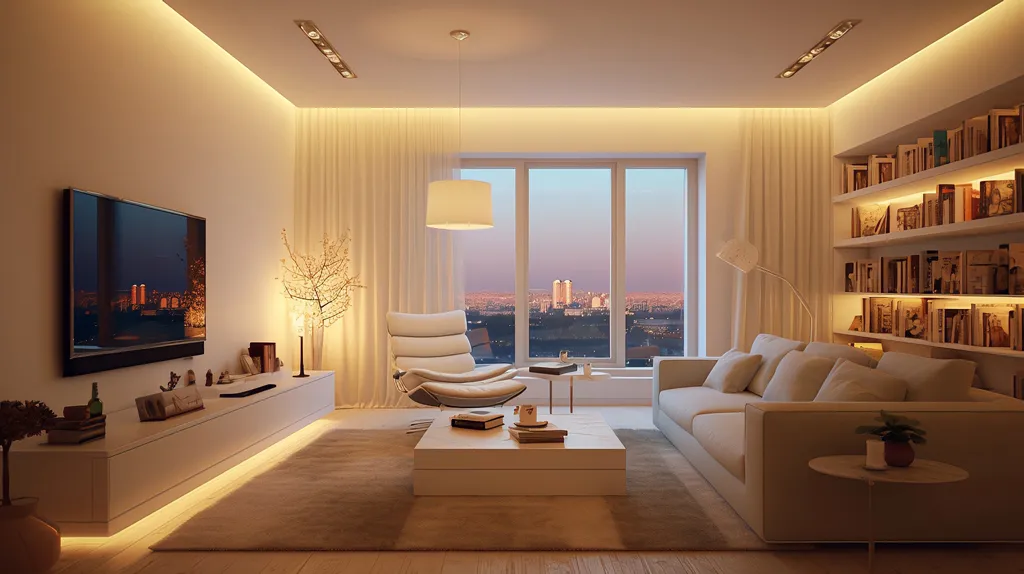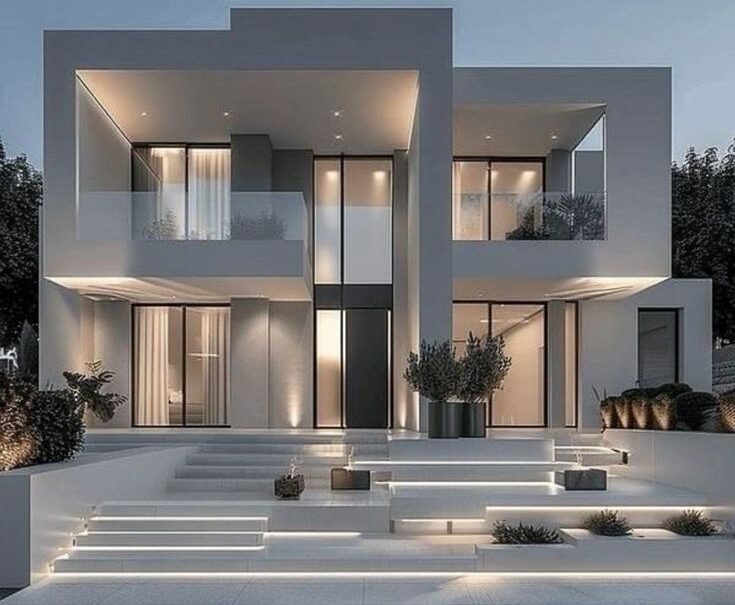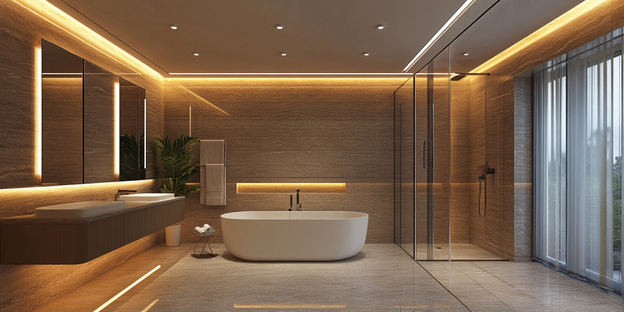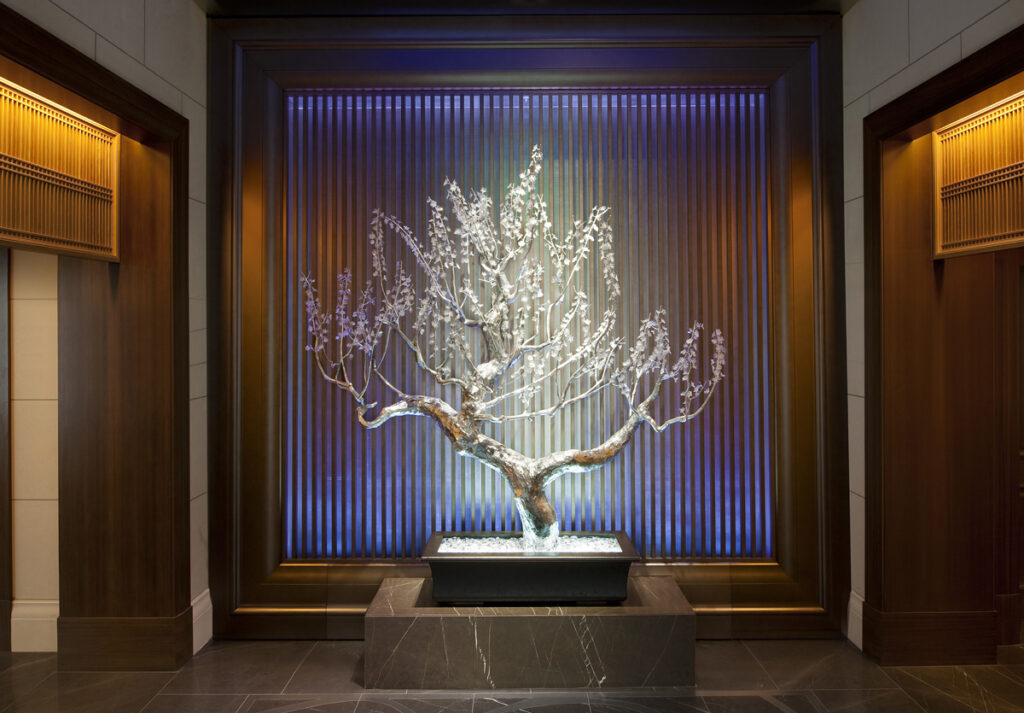Lighting and illumination are two vital elements in the design of spaces that play a major role in improving aesthetics and efficiency. Illumination refers to the amount of light reaching a surface and is measured in lux. Choosing the right lighting for each environment depends on the activities performed in that space; for example, office environments require 300-500 lux and study rooms require 500-800 lux. In contrast, illumination refers to how light is adjusted and distributed in a space to create specific visual effects and improve aesthetics.
Using multiple light sources, paying attention to the color temperature of the light, and using dimmers to adjust the intensity of light are important points in lighting and lighting design. Also, new technologies such as color-changing LED lamps, smart lighting systems, and motion sensors help improve the quality and efficiency of lighting. By following these points, it is possible to design an attractive, efficient, and pleasant space that has a positive impact on people’s health and comfort.
Interior Lighting Design and Implementation
Interior lighting design is a crucial aspect of creating a pleasant and efficient indoor environment. This process includes selecting suitable light sources, determining installation locations, and adjusting the angle and intensity of light to achieve balance and harmony within the space. By following these steps and tips, you can design and implement effective interior lighting that enhances both functionality and aesthetic appeal. Below are the key steps for designing and implementing interior lighting:
Steps for Interior Lighting Design and Implementation
- Needs Analysis:
- Identify the lighting requirements for each space based on the activities performed there.
- Evaluate and analyze the natural light available in the space and determine the need for artificial lighting.
- Choosing the Type of Lighting:
- General Lighting: Provides basic illumination for overall space brightness.
- Focused Lighting: Offers lighting for specific activities like reading, cooking, or working.
- Accent Lighting: Highlights special elements such as artworks, plants, or architectural features.
- Selecting Light Sources:
- Choose appropriate light sources based on the type of lighting and space requirements.
- Opt for high-quality lamps like LEDs to reduce energy consumption and extend lifespan.
- Determining Installation Locations:
- Identify suitable locations for installing light sources based on the space’s needs.
- Ensure the placement of light sources creates balance and harmony in light distribution.
- Adjusting Light Angle and Intensity:
- Set the light’s angle to avoid creating unwanted shadows.
- Use dimmers and controllers to adjust light intensity for different lighting modes.
- Installation and Setup:
- Carefully install light sources and associated equipment following necessary standards.
- Conduct final testing of the lighting system to ensure proper functionality and lighting quality.

Exterior Lighting Design and Implementation
The design of exterior lighting plays a vital role in beautifying open spaces while enhancing their safety and security. By following these steps and guidelines, you can create and execute an exterior lighting plan that is both efficient and visually appealing. Below are the key steps for designing and implementing exterior lighting:
- Identifying Needs and Applications: Begin by determining the lighting needs of each space. This involves analyzing the type of activities conducted in each area, the amount of natural light available, and the requirement for artificial lighting. For instance, gardens, entrances, walkways, and relaxation areas each have unique lighting demands.
- Choosing the Type of Lighting : Select the appropriate lighting type based on the needs of each space:
- General Lighting: Provides overall illumination for large areas like parking lots and big gardens.
- Task Lighting: Designed for specific functional needs, such as lighting pathways, walkways, and entrances.
- Accent Lighting: Highlights specific elements like statues, plants, or architectural features such as fountains.
- Selecting Suitable Light Sources: Choose high-quality, weather-resistant light sources. LED lamps are an excellent choice due to their low energy consumption, long lifespan, and variety of colors and intensities. For outdoor environments, use fixtures resistant to moisture and dust.
- Locating Light Sources: Identify optimal locations for installing light sources. Ensure these locations allow for uniform light distribution and minimize dark spots. Additionally, adjust the light’s angle to prevent unwanted shadows and enhance safety.
- Adjusting Light Intensity: Use dimmers and controllers to adjust the light intensity according to different times and needs. This feature helps create varied atmospheres while saving energy.
- Installation and Setup: Install lighting fixtures and related equipment with precision and in accordance with necessary standards. After installation, conduct a final inspection and test the lighting system to ensure proper operation and lighting quality. Additional fine-tuning and adjustments may also be required.

Lighting Design and Implementation
Lighting design and implementation involves creating the right combination of different lights to improve aesthetics, functionality, and create the desired atmosphere in indoor and outdoor spaces. This process begins with analyzing the lighting needs and determining the appropriate type of lighting for each space; from general lighting to provide basic lighting to functional lighting for specific activities and accent lighting to highlight decorative elements. Selecting quality light sources that are resistant to different conditions, determining appropriate installation locations, and adjusting the angle and intensity of light are key steps in this process.
Also, using dimmers and smart systems to control and adjust light allows you to create different lighting moods. Modern technologies such as color-changing LED lamps and motion sensors help improve the quality and efficiency of lighting. Finally, careful installation and commissioning of lighting equipment, final inspection and testing of the lighting system are essential to ensure proper operation and quality of lighting. By following these steps and tips, you can design and implement a beautiful, efficient, and pleasant space that has a positive impact on people’s health and comfort.
Additional Lighting Tips
- Choosing the Right Color Temperature: Warm lights are better suited for relaxation spaces, while cool lights are more appropriate for work environments.
- Using Smart Systems: Smart systems allow automated lighting control through apps.
- Energy-Efficient Light Sources: Opting for LED lamps is recommended to reduce energy consumption and extend lifespan.
Modern Lighting Technologies
- LED Lamps with Color-Changing Features: Enable adjustments in color and light intensity for creating diverse visual effects.
- Solar Lighting: Utilizes solar energy to reduce power consumption and protect the environment.
- Motion Sensors: Automatically activate lights when movement is detected, enhancing security.

Final Words
Shamim Andisheh Company is one of the leading companies in the field of building facade lighting in Tehran. Established in 2000 (1379 in the Iranian calendar) with the goal of consulting and implementing professional lighting projects, Shamim Andisheh has, over the years, leveraged its extensive experience and professional experts to undertake the design and implementation of lighting projects. In some projects, the company has used customized equipment produced in-house.
Services and Expertise of Shamim Andisheh Company
- Facade Lighting: Design and implementation of lighting for building exteriors.
- Green Space Lighting: Creating lighting effects in green spaces and gardens.
- Lighting Systems: Providing and installing modern and energy-efficient lighting systems.
- Specialized Consulting:
Contact Methods for Shamim Andisheh:
- Phone: You can call using the following number:
- Head Office: 12-44071011 (021)
- Email: You can send your email to the following address:
- shamim@shamimco.com
- Website: Through the official website of Shamim Andisheh, you can send your message.
- Website Address: www.shamimco.com
- Social Media: Shamim Andisheh is active on social media platforms such as Instagram and LinkedIn. You can connect with them through these platforms:
- Phone for Social Media Contacts: 09394121002

 English
English العربية
العربية

















